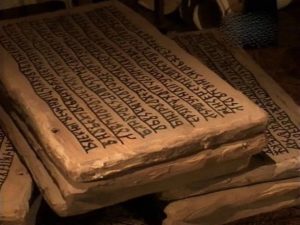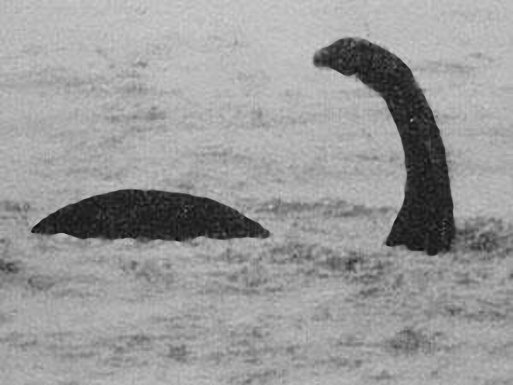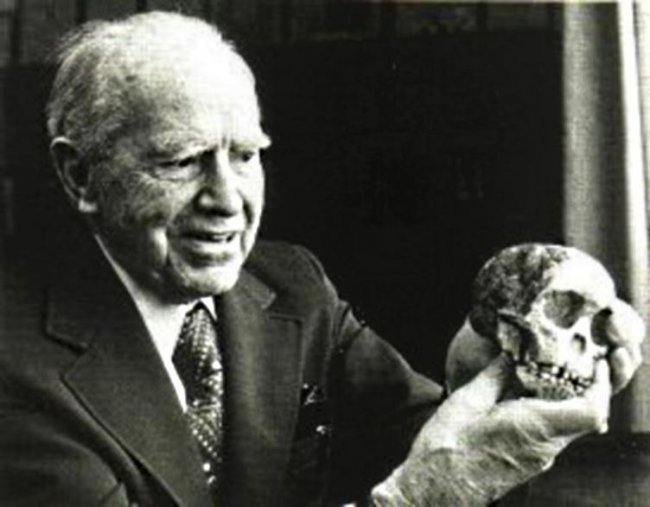Unsolved mystery of the 20th century: “The Book of Veles”
 The time has come for another unsolved mystery of the 20th century from our already half-lost series of secrets of the 20th century. The Veles Book is a written text first published in the 1950s by Russian emigrants Yu. P. Mirolyubov and Al. Kurom (A. A. Kurenkov) in San Francisco. According to the stories of Mirolyubov, he was written off from the wooden planks lost during the war, allegedly created around the 9th century. It contains legends, prayers, legends and stories about the ancient Slavic history from about the VII century BC. er until the ninth century n. er
The time has come for another unsolved mystery of the 20th century from our already half-lost series of secrets of the 20th century. The Veles Book is a written text first published in the 1950s by Russian emigrants Yu. P. Mirolyubov and Al. Kurom (A. A. Kurenkov) in San Francisco. According to the stories of Mirolyubov, he was written off from the wooden planks lost during the war, allegedly created around the 9th century. It contains legends, prayers, legends and stories about the ancient Slavic history from about the VII century BC. er until the ninth century n. er
Unsolved mystery of the 20th century: “The Book of Veles”
Most academic researchers – both historians and linguists – believe that this is a falsification, written in the XIX or (more likely) XX century and primitively imitating the ancient Slavic language. The most likely falsifier of the text is considered to be Yu. P. Mirolyubov himself.
Unsolved mystery of the 20th century: “The Book of Veles”
Originally published under the name “Isenbek’s Table”, the name “In (e) Forest Book” is given by the first word (LUSTER) on a plate 16 and is associated with the name of the Slavic god Veles.
Unsolved mystery of the 20th century: “The Book of Veles”
Data on the discovery and loss of tablets
All information about the history of the text up to the date of publication comes from the emigrant, the author of artistic works and amateur works on Slavic folklore Yu. P. Mirolyubov.
According to his stories, in 1919, Colonel of the Volunteer Army Ali (Fyodor Arturovich) Izenbek found during the retreat from Moscow in the ransacked and abandoned Zadonsky princely estate (this princely family did not exist; supporters of the authenticity of the plates offer different versions of the name of the owner of the estate), the looted library wooden slats, speckled with incomprehensible letters, and took them. All plates were approximately the same size – 38 × 22 cm, half a centimeter thick and had a hole for fastening with a belt. The text was scratched with an awl or burned out, and then coated with varnish or oil. In the works of Mirolyubov, in addition to the word “plates”, the term “plates” (in the genitive case of boards) of obscure origin is also used (it is absent both in traditional Slavic monuments and in the Veles Book itself; perhaps from Ukrainian. “Board”). Mirolyubov describes the circumstances of the find:
“Isenbek found them in the plundered estate of either the princes of Zadonsk, or the Don or Dontsovs, I don’t remember, because Isenbek himself didn’t know their name. It was on the Kursk or Oryol direction. The owners were killed by red bandits, their numerous library was plundered, torn, and scattered small boards lay on the floor along which ignorant soldiers and Red Guards walked before the arrival of the Isenbek battery. ”
In 1925, Isenbek settled in Brussels, where Mirolyubov learned about the tablets, and he began to study them. Isenbek was jealous of the planks, did not allow them to be carried out of his room, and rejected the offer of a professor from the University of Brussels, Ekka. Mirolyubov tried to restore the planks, rewrite them, decrypt and take pictures. He managed to rewrite a large part and keep a fairly clear image of one of the plates and a few more (up to six) less clear ones. In August 1941, Isenbek dies, and the tablets disappear without a trace.
According to the version set forth by A.I. Asov, during the German occupation M. Sheftel, an employee of prof. Ekka, headed the department of Anenerbe at the University of Brussels and stole the planks from Isenbek’s apartment in Brussels to study them, and after the war sold them to the Mormons. However, there is no documentary evidence that anyone else besides Mirolyubov saw the “Izenbek plates”.
Publishing history
August 10, 1952 Al. At the Russian Center in San Francisco, Chur read a report on the pre-Cyrillic script, “Russian Letters,” which stated that the Russians had their own script before the arrival of Cyril and Methodius. In the same year, Chicken from the pages of Zhar-Ptitsa magazine, a print organ of the Russian Center in San Francisco, appealed to readers to explain the fate of the ancient tablets from the Izenbek library. In September 1953, Yu. P. Mirolyubov responded to this appeal. The correspondence of Kura and Yu. P. Mirolyubov was partly published by A. Asov.
In November 1953, the first message about Russian tablets of the 5th century appeared in The Firebird, and from January 1954 to February 1955, Kura published articles about tablets containing quotes from Mirolyubov’s notes and a photo of one of the tablets (later No. 16).
The interest of readers of the magazine to the “Book of Veles” allowed in the summer of 1954 Yu. P. Mirolyubov to emigrate to the USA and immediately become the editor of The Firebird, and from 1956 the magazine itself began to be published by typographical means (initially it was published on a rotator). However, in 1956 not a single article about the tablets was printed, but the publication of poems and short stories by Yu. P. Mirolyubov began.
From March 1957 to May 1959, the Firebird began to systematically publish the texts of tablets, which were renumbered in an incomprehensible way.




